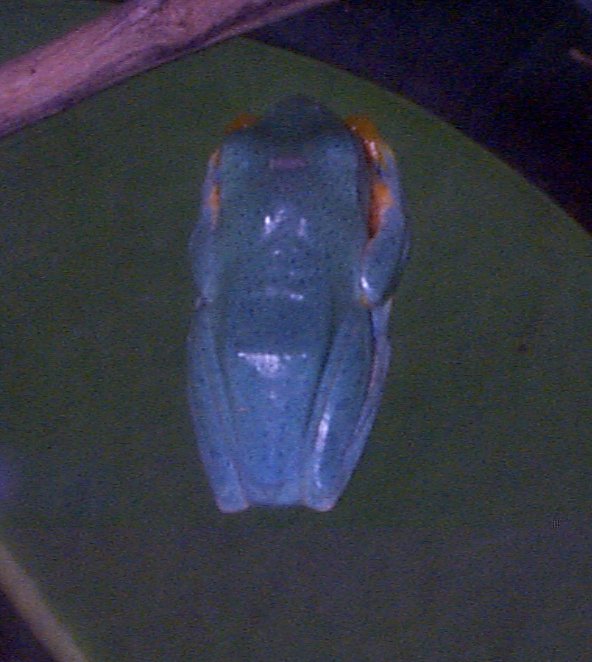Physical Description:
Adults
can reach up to 3.5 inches in length for females, and slightly smaller
for male specimens. The body is light green to dark green with tiny
dark spots around the back and head. The green coloration varies from
light to dark. The eyes are light yellow, light greenish, or light gray,
with a black horizontal pupil. Males are more elaborately
colored, with orange, green, purple, black, and yellow coloration on
the sides of the abdomen and on the webs of the feet. Females are slightly
more understated, with reduced webs and less-brilliant coloration. Males
will also develop nuptial pads on the front feet during breeding season.
Special Adaptations:
R.
reinwardtii have large, colorful
webs between each toe on both the front and hind extremities. These
webs are used to glide from tree tops to the ground, and aid in catapulting
from leaf to leaf. The feet also possess adhesive discs.
Reproductive Behavior:
They
breed
during the rainy season
in their natural habitat. Pairs, usually accompanied by several other
mating pairs, will construct a foam nest where the female will deposit
up to 800 eggs. The foam nest is strategically built over a body of
water so that the eggs or hatched larvae fall into the water to further
develop. In the wild, a foam nest may be a compilation of several pairs'
efforts, making the nest rather large.
The Animal at the Zoo:
While at the zoo you
won't see the frog moving much if any at all. The frog is generally
hiding and can even be difficult to find in the tank. If you look hard
enough you can usually find him sitting on a leaf much like you
see in the pictures.
Page Author:
Maren
Petersen mepetersen@mail.txwes.edu
Sources and Links:
Miller, Jessica J. (2004). Living Underworld Species Database. Livingunderworld.org. http://www.livingunderworld.org/anura/database/rhacophoridae/ Eric Moulin. Rhacophorus reinwardtii. Asean Regional Centre for Biodiversity Conservation. |
|
| |
